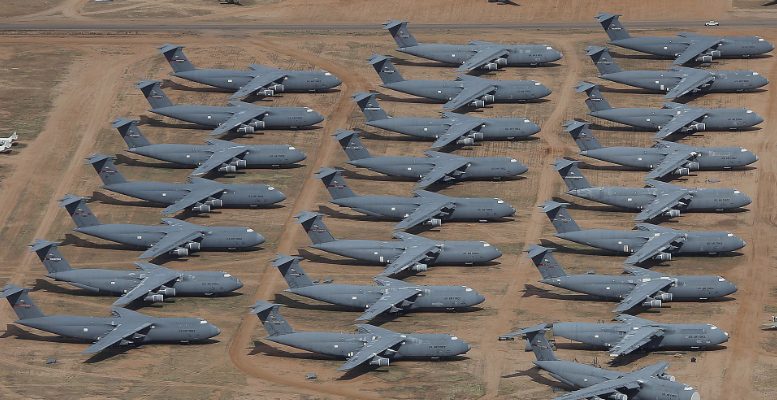In the southwestern United States, there lies a captivating site that appeals to both military buffs and aviation enthusiasts alike: the world’s largest aircraft graveyard. Located in the vast expanse of the Arizona desert, this fascinating place showcases over 4,000 abandoned aircraft from various eras, making it a treasure trove for history enthusiasts and curious minds.
Known as the 309th Maintenance and Regeneration Group (309th AMARG), this facility was established after World War II. Initially created to store the surplus aircraft of the U.S. Army, including Douglas C-47 Skytrains and Boeing B-29 Superfortresses, it gradually evolved into a sprawling repository for retired military planes.
Over the years, the 309th AMARG underwent several name changes and played crucial roles in aircraft storage and disposition. It housed iconic aircraft such as the Conair B-36 Peacemakers and played a vital part in the Strategic Arms Reduction Treaty (START I), which aimed to reduce missile deployment during the Cold War.
The 309th AMARG is not just a resting place for retired aircraft; it also serves as a center for aircraft reclamation and modification. It houses a diverse range of aircraft from various branches of the U.S. military, including the Air Force, Army, Marine Corps, Coast Guard, Navy, and even federal agencies like NASA.
The arid climate of Arizona, characterized by low humidity and minimal rainfall, makes it an ideal location for storing aircraft outdoors. The dry environment and relatively firm ground prevent the planes from sinking into the soil, providing an optimal setting for long-term storage.
Each year, hundreds of aircraft are brought to the 309th AMARG and classified into different categories based on their condition and purpose. Some aircraft are preserved without any parts removed, while others are designated for parts reclamation or kept in flying condition. The excess aircraft are either sold whole or dismantled for individual parts.
Visiting the 309th AMARG is a unique experience, allowing visitors to witness the vast collection of abandoned planes and gain insight into the history of aviation and military technology. However, due to its military nature, access to the facility is restricted to organized bus tours conducted by the Pima Air & Space Museum.
The World’s Largest Aircraft Graveyard stands as a testament to the evolution of aviation and the legacy of military aircraft. It unveils a captivating glimpse into the past and serves as a reminder of the incredible engineering feats achieved by mankind.





